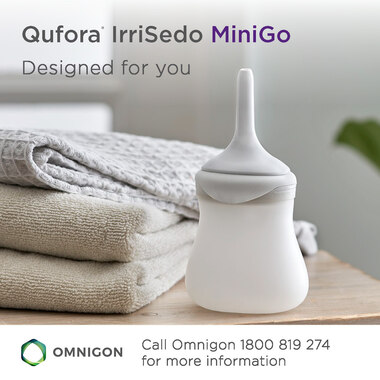Volume 28 Number 3
Editorial
Dr Jenny Kruger
For referencing Kruger J. Editorial. Australian and New Zealand Continence Journal 2022; 28(3):39-40.
DOI https://doi.org/10.33235/anzcj.28.3.39-40

This spring edition has a happy but somewhat unintentional theme of continence care in older adults in Australia.
It is no surprise that Australia and New Zealand have an ageing population. Supporting and caring for older adults, be that in residential care homes or in community, requires resources and a skilled workforce. Many would argue that these essential services are just not there in sufficient quantity in either of our countries. This edition of the Journal provides evidence that investing in early interventions or adopting well designed and tested models of care for residential aged care home residents will go some way to providing the dignity of care that so many need when managing continence issues.
The first paper describes a mixed methods study using co-design and testing via a pilot study to develop a model of continence care for Australian residential aged care homes. The model was comprehensively trialled and co-designed with input from several stakeholders within the residential aged care staff from two Australian residential aged care homes, as well as residents. Educational components for staff within the model assessed the feasibility of delivering the model, which the Continence Foundation has used to design Continence SMART Care (CSC). This is an exciting development, illustrating translational research which can make a big difference to the lives of those living with incontinence, as well as those working in the area of aged care and providing care and support for residents.
The other two papers are both from South Australia. One describes several factors and risks related to poor bladder health in older community dwelling Australians. The authors explored associations between a number of risk factors such as age, gender, body mass index, regular exercise and bladder health. Various statistical techniques tested the strength of these associations and, based on the findings, recommendations for public health interventions are suggested.
The other paper from this group looks again at associations but this time teases out the associations between pelvic floor health (PFH) and frailty. In both these studies, statistical associations were determined from a large sample size of community dwelling adults. It seems that the ‘take home message’ is that there are modifiable lifestyle and early interventions which could make a significant difference both in terms of healthy bladders and healthy ageing more broadly.
We do hope you are enjoying the new look and new format of the Journal. As always, we appreciate your input, and if you do have a particular area of interest which could lend itself to a themed edition, we would be keen to hear from you.
Nga mihi nui (warm regards)
Dr Jenny Kruger
Editor in Chief
ANZCJ

Author(s)
Dr Jenny Kruger
Editor in Chief
ANZCJ




